
Pediocactus is a genus of cacti. The genus comprises between 6 and 11 species, depending upon the authority. Species of this genus are referred to as hedgehog cacti, though that name is also applied to plants from the genera Echinocereus and Echinopsis. Species may also be referred to as pincushion cacti, a common name which is also applied to other genera.
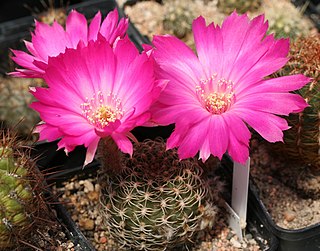
Lobivia backebergii is a species of flowering plant in the cactus family Cactaceae, native to eastern Bolivia and southern Peru.

Lobivia cinnabarina is a species of cactus first described in 1885.

Acanthocalycium thionanthum is a species of Acanthocalycium from Argentina.

Lobivia ancistrophora is a species of cactus. It has a globular shape, few spines, with large, white flowers attached to long, green tubes. It occurs in Bolivia, at altitudes of 600–1800 metres. Under its synonym Echinopsis ancistrophora it has gained the Royal Horticultural Society's Award of Garden Merit.

Soehrensia formosa, is a species of Echinopsis found in South America. In north-western Argentina, Bolivia and northern Chile. First published in Cactac.: Handb. Kakteenk. 3: 1678 in 1959.

Echinopsis aurea, is a species of Echinopsis found in Argentina.

Lobivia obrepanda, is a species of Lobivia found in Bolivia.
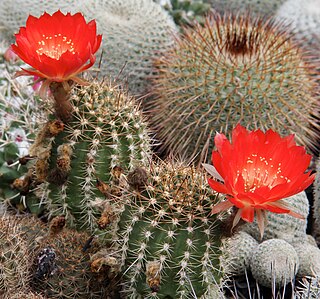
Lobivia hertrichiana is a species of Lobivia found in Bolivia and Peru.

Lobivia pentlandii, is a species of Lobivia found in Bolivia and Peru.
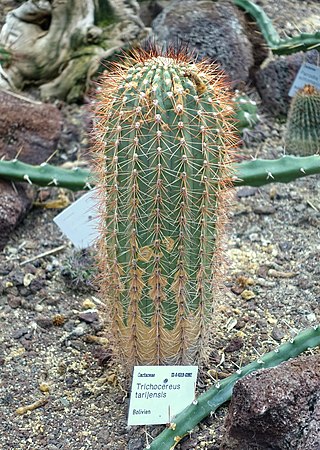
Soehrensia tarijensis, is a species of Soehrensia, in the cactus family. It is native to Bolivia and northwestern Argentina.

Lobivia schieliana, is a species of Lobivia found in Bolivia and Peru.

Lobivia pampana is a species of Lobivia found in Peru.

Lobivia tiegeliana, is a species of Lobivia found in Argentina and Bolivia.
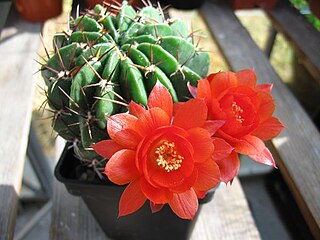
Lobivia maximiliana, is a species of Lobivia found in Bolivia and Peru.

Neoraimondia arequipensis, synonym Neoraimondia macrostibas, is a tree-like cactus native to western Peru. It was first described in 1835 as Cereus arequipensis.

Echinopsis marsoneri is a species of cactus from Argentina and Bolivia.
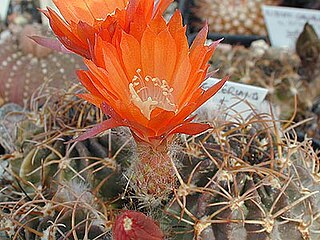
Lobivia tegeleriana is a species of Lobivia found in Peru.

Oreocereus leucotrichus is a species of cactus native to Peru and Chile.
Lobivia pugionacantha, is a species of Lobivia found in Argentina and Bolivia.






















